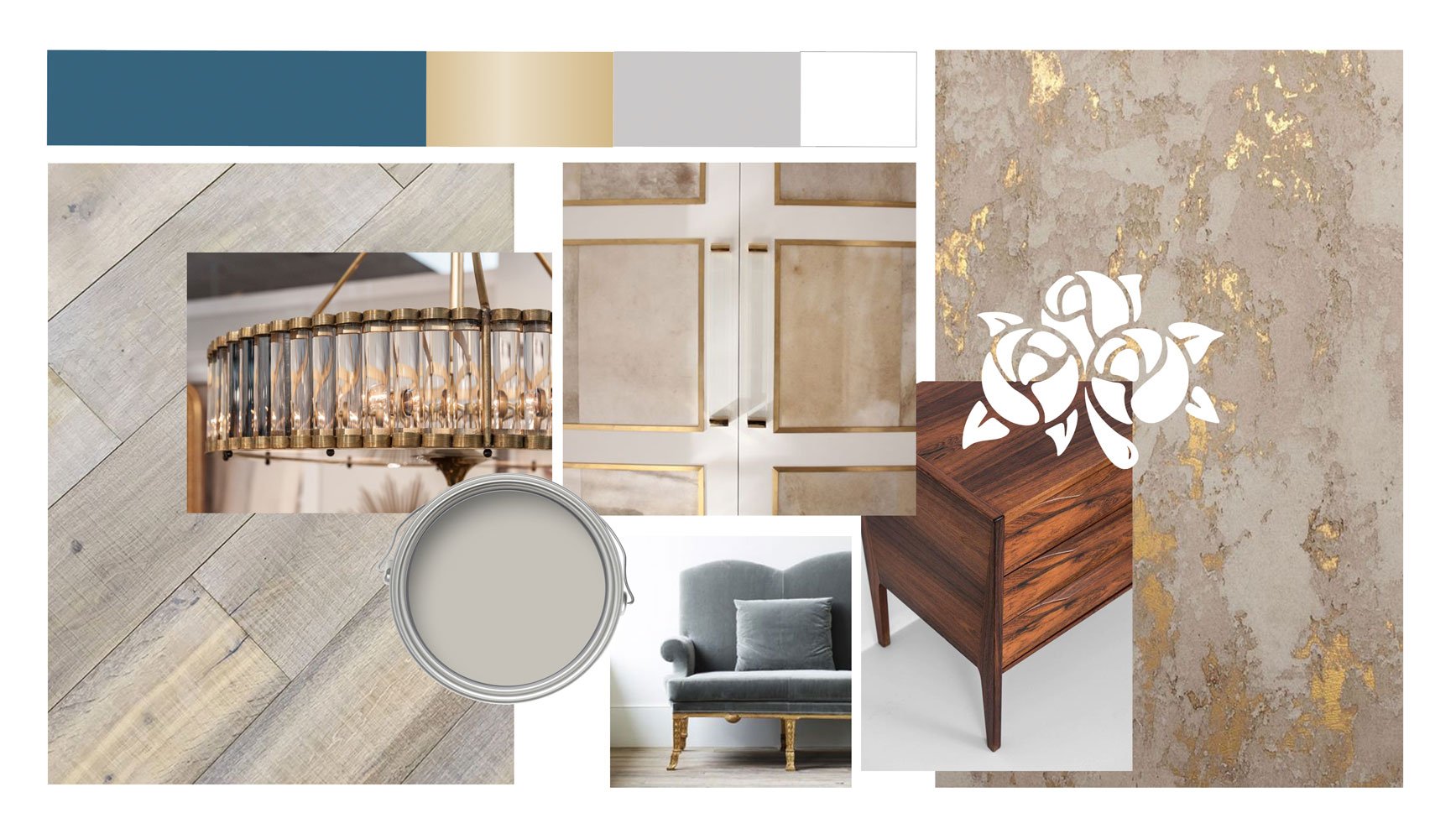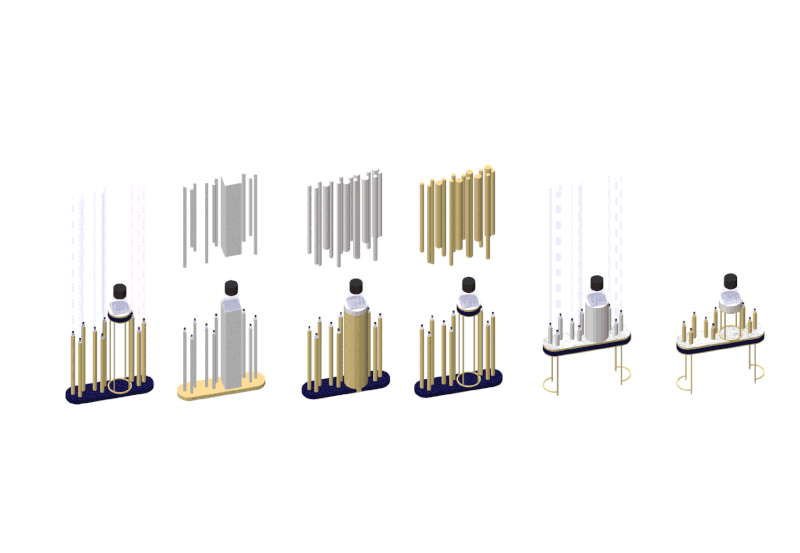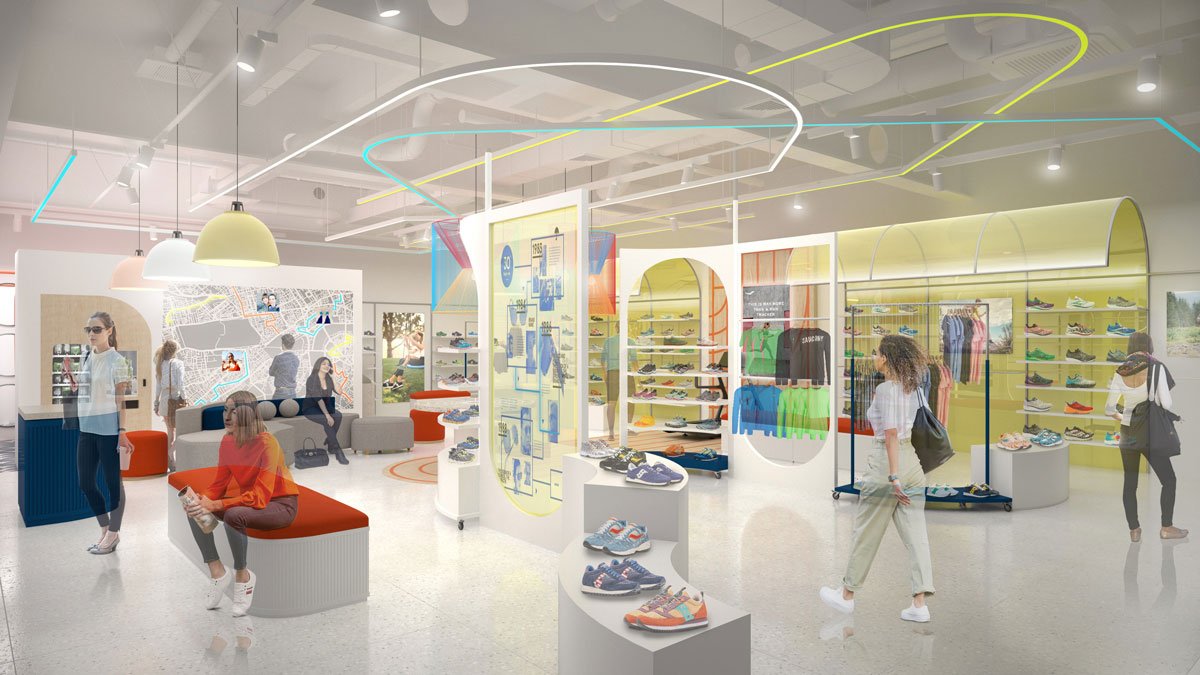INSIGHT
Intelligent design
What AI means for the future of interiors and for clients
When Channel 4’s Dispatches: Will AI Take My Job? aired earlier this year, it reignited a familiar question, not just for architects and designers, but for clients too. If artificial intelligence can generate layouts, visualisations and even mood boards in seconds, what does that mean for the creative process and ultimately the end consumer…humans?
The conversation is no longer hypothetical. Investment bank Goldman Sachs made headlines with its prediction that AI could replace the equivalent of 300 million jobs globally across industries. Design is not immune to these shifts.
But at Caulder Moore, we believe this isn’t a story about replacement, it’s about enhancement. AI is changing the design journey, making it more interactive, transparent and empowering for clients than ever before. We take a closer look at how AI impacts interior design and what it takes for brands to create truly striking, commercially successful spaces that we as humans want to spend time in and enjoy.
Beaufort and Blake, London. 3D Visuals and storefront for first physical store
From inspiration to collaboration
Until recently, most people’s idea of artificial intelligence and design might have been dreamlike renderings, fantastical interiors conjured by typing a few words into a platform like Midjourney.
Where once Pinterest boards helped clients express their vision, AI tools now go a step further, transforming rough ideas into vivid, photorealistic spaces almost instantly. This enables real-time dialogue between client and designer: “What if we tried this colour palette?” or “How would the space feel with more light?”
Inspiration and advice have never been the biggest challenges. If great design were only about finding ideas and products, the profession would have ended when online platforms started offering every source at the click of a button. The true impact of AI is much deeper, from client expectations to flexibility.
Les Senteurs moodboard and logo animation
What this means for clients
Transparent design
AI allows designers to quickly generate multiple layouts, styles and options, giving clients the ability to explore ideas early in the process. Clients can provide real-time feedback and see a complete view of the design, from layout to finishes to lighting, making the process more collaborative, transparent and enjoyable.
Thameen, Dubai. 3D rendered visuals and sketches of store interior
Thameen, Dubai. Store interior
Reduced risk
Photorealistic visualisations and virtual walkthroughs let clients experience a space long before construction begins, minimising surprises and ensuring the final result aligns with expectations. At Caulder Moore, realistic renders have long been a core part of the interior design process, helping clients make informed choices with confidence.
Video animation walk-through of the Aspinal of London store in Regent’s Street.
Predicting trends, not just following them
AI can analyse consumer behaviour and historical data to identify emerging style trends and anticipate product demand. For clients, this means their spaces can feel contemporary and relevant without blindly following every passing trend. That said, predictive insights are only as powerful as the human interpretation: designers still bring the context and the understanding of brand identity to translate trends meaningfully.
The continued importance of the human touch
While AI in interior design offers extraordinary technological advantages, it cannot replace the most vital element of design: the human touch. Since new technology is making it easier than ever to generate designs quickly and affordably, there is a recognisable growing sense of fatigue with stores and interiors beginning to look increasingly similar. Templates, pre-trained algorithms and trend-driven outputs can unintentionally homogenise spaces, so that if you stripped away the brand name and lifestyle touches, many interiors might feel interchangeable. Exceptional commercial interiors are not simply visual compositions, they are reflections of emotion, story and brand culture. That depth of strategic understanding can only come from human connection.
Capturing emotion
AI can generate beautiful images, but it doesn’t feel emotion, it can’t understand what for example, home, means to you. A skilled designer listens, interprets and translates a brand’s story into spatial experiences, creating interiors that evoke comfort, inspiration and belonging.
Ensuring originality beyond the algorithm
AI algorithms are trained on existing data, often recycling what’s already popular. Left unchecked, this can lead to designs that feel formulaic or trend-driven. Designers act as curators and editors, injecting originality and personal nuance to ensure every project feels distinctive and authentic.
Quality control
Even the most convincing AI visualisation can still be misleading. Scale, materials, lighting and regulations require professional oversight to ensure the design is both buildable and compliant. The designer’s role is to bring precision and craftsmanship to what AI can only approximate.
Photorealistic render of a interior retail store design concept by Caulder Moore
A smarter partnership between people and technology
For clients, AI represents an exciting new chapter, one where the retail interior design process can become more interactive and transparent. It allows for clearer communication, faster results and more confident decision-making.
But the most successful projects will remain those that combine the best of both worlds: the speed and insight of AI with the intuition, empathy and artistry of human designers.
At Caulder Moore, we see AI not as a threat but as a tool, one that enhances creativity, empowers clients and helps us craft intelligent interiors that stand the test of human experience. We are passionate about our collaborative working partnerships with our clients and when used well, the future use of AI in interior design compliments this approach.
In the end, the future of great design isn’t artificial, it’s beautifully human.






